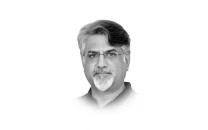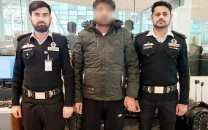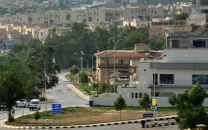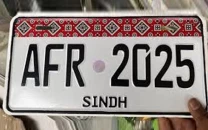Saffron in the ranks: is India's army losing its neutrality?
The rise of Hindutva in India’s military is eroding its neutrality, alienating minorities, threatening national unity

In his book Saffron Republic: Hindu Nationalism and State Power in India, Thomas Blom Hansen argues that the RSS systematically embedded Hindu supremacist ideology within the Indian Army through a deliberate, long-term strategy. He explains that in the post-Partition era, the Indian Army was largely apolitical, secular and professional. However, from the 1990s to the 2000s, the rise of the RSS and BJP enabled the gradual infiltration of Hindutva ideology, marked by the introduction of Hindu rituals (such as Ganesh pujas and saffron flags) into military spaces. This transformation was carried out through a two-pronged strategy: spreading communal narratives and conditioning soldiers to view Muslims as enemies. Saffron flags began to appear at military events, and Hindutva aligned historical narratives were incorporated into the training curriculum.
Over time, the world began witnessing the practical consequences of this ideological shift. A prominent example is the 2002 Gujarat riots, during which the deployment of the Indian Army was not only intentionally delayed but, once deployed, units were reportedly instructed to assist Hindu mobs. This event strengthened the foundations of the saffornisation project. After 2014, the BJP government further normalised saffron symbols in military settings, placing saffron flags at official events and popularising slogans such as Bharat Mata Ki Jai in barracks. The RSS also created networks of influence by encouraging retired officers aligned with its ideology to join affiliated bodies such as the Bharatiya Sainik Sangh.
In 2019, the world saw India's Defence Minister Rajnath Singh perform the Hindu ritual of shastra puja (weapon worship) during the commissioning of the first Rafale jet conducted on the Hindu festival of Dussehra. Although these rituals are part of Indian culture, their performance by state officials in military contexts raised concerns about religious neutrality.
In the domain of perception and narrative building, Indian media closely followed the government's cues, increasingly portraying Indian Army as "Hindu protectors". False-flag operations such as Pulwama and (2019) Pahalgam (2025) were used to reinforce this narrative.
The politicisation of the Indian Army has eroded its neutrality and transformed it into a political instrument of the BJP. Its institutional integrity has been weakened, with elements of neutrality fading as Hindu-first preferences in recruitment, promotions and welfare policies began alienating minority officers and soldiers. This shift also deepened internal divisions along caste, regional and religious lines, further undermining military cohesion. For example, Lt Samuel Kamalesan, a Christian officer, was dismissed in 2025 for refusing to participate in Hindu rituals, a decision later upheld by the Delhi High Court. Minority personnel of Sikh, Muslim and Christian faith now face pressure to either conform or be sidelined.
The message is clear: the Indian Army is no longer perceived as neutral. At the National Unity Day event in 2025, the Army Chief and senior officers attended Hindu ceremonies in uniform, with the Chief bearing a tilak and receiving garlands from priests. This is not merely an issue of personal faith; the optics raise the question of whether the military belongs to all Indians or only one community. Military operations are now named Sindoor and Mahadev, and recruitment schemes like Agnipath, which bring in thousands annually, reportedly attract many individuals linked to the RSS. Even Sainik Schools institutions meant to cultivate future military leadership are increasingly influenced by Hindutva groups.
After India's military setback against Pakistan in May 2025, the Army Chief visited a Hindu ashram in uniform, where a spiritual leader offered him diksha (initiation) and urged him to "reclaim Kashmir" as an offering. Critics widely viewed this as crossing a red line: the military cannot become a disciple of any religious figure.
Once a symbol of national unity, India's military is being reshaped into "Modi's army". A saffron-tinged force risks fracturing the nation, alienating minorities and losing its institutional soul. This is not merely about religion, but about the very identity of India as a democracy.















COMMENTS
Comments are moderated and generally will be posted if they are on-topic and not abusive.
For more information, please see our Comments FAQ